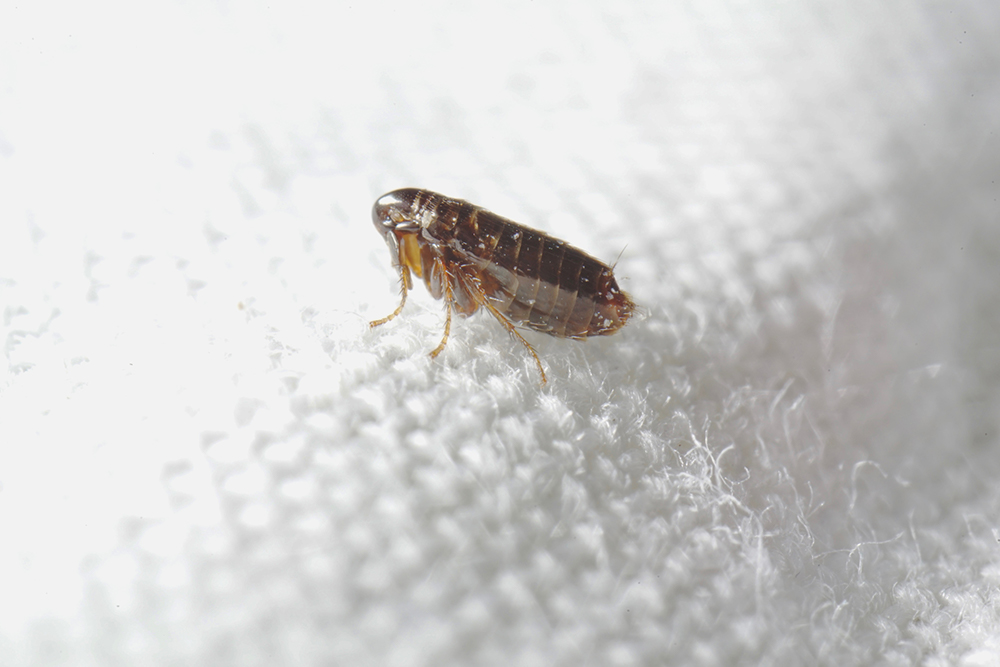
It may not always seem like it, but the temperatures are starting to creep up as spring slowly takes hold in the Pacific Northwest. We may love the return of flowers, but warmer weather also brings out fleas. During warmer weather fleas become more active and reproduce more rapidly which is not only bad news for pets but also for their caregivers. The experts at Northwest Pest Control have seen their share of flea infestations, and it isn’t pretty. Don’t wait to eradicate it!
Flea Hopping
Where do they come from? Fleas can invade a home through various means:
Pets: Dogs and cats are common carriers of fleas. The fleas that are living outside or on other animals attach to the fur of Rover and Fluffy who trot them right into your home.
Wild animals: If you need another reason to dislike rodents, consider that they can carry fleas. If your pets try to play with the local rat population or take a shine to a neighborhood raccoon those fleas may jump aboard turning your pooch into a flea transport module. Of course, if rodents have taken up residence in your home they can bring those fleas in directly.
Humans: We can’t just blame our furry friends for carrying fleas. Fleas can also attach to clothing or shoes. Your walk in the woods can bring home an infestation, or your friend who has become a flea carrier may also introduce the pests to your household on his next visit.
Used furniture and clothing: It’s good practice to ensure your second-hand finds have been cleaned and sanitized, especially when you consider that fleas may leave behind eggs, larvae, or pupae in fabrics like clothing, rugs, or furniture, especially if the fabric sits in a relatively undisturbed space.
Once inside your home, fleas can quickly multiply, laying eggs in carpets, bedding, upholstery, and cracks in floors or walls. The eggs hatch into larvae which spins cocoons that eventually develop into adult fleas. A flea infestation can become a significant problem if not addressed immediately.

Flea Stopping
Now is the time to take extra precautions to protect your home against an infestation. The goal is to eliminate any existing fleas and prevent future infestations. There are a few ways a homeowner can address a flea problem, but if things get out of hand, call in the professionals at Northwest Pest Control
The good news is that many flea prevention methods are actions most homeowners take regularly starting with good housekeeping.
- Vacuum regularly including carpets, rugs, furniture, and areas where pets frequent. Pay special attention to crevices and corners where flea eggs and larvae may hide.
- Wash bedding, both your own and your pet’s, using hot water to kill any fleas or eggs.
- Mow lawns and trim vegetation to reduce the areas where fleas can hide and thrive.
- Seal potential flea entry points to your home such as cracks in walls, windows, and doors.
- Groom your pets with a flea comb to remove any eggs or larvae and if you see signs of fleas in their fur, use flea control products specifically designed for your pets, such as flea collars, topical treatments, oral medications, or flea shampoos.
- Use flea control products in your home if fleas are spotted. There are many sprays, powders, or foggers on the market that contain insect growth regulators (IGRs) and adulticides. Make sure to follow the instructions carefully and take necessary precautions, especially if you have children or pets.
With any of these methods, consistency is key when dealing with fleas. It’s essential to continue preventive measures even after the infestation is under control to avoid re-infestation. If you have fleas in your home and home remedies aren’t working or you just would prefer to bring in the experts, hire a professional pest control service. Northwest Pest Control will be happy to offer our services to assess your situation and provide a targeted treatment plan, both inside and outside, followed by a strategy to prevent future infestations. Don’t let fleas ruin your spring fever! Contact us today.